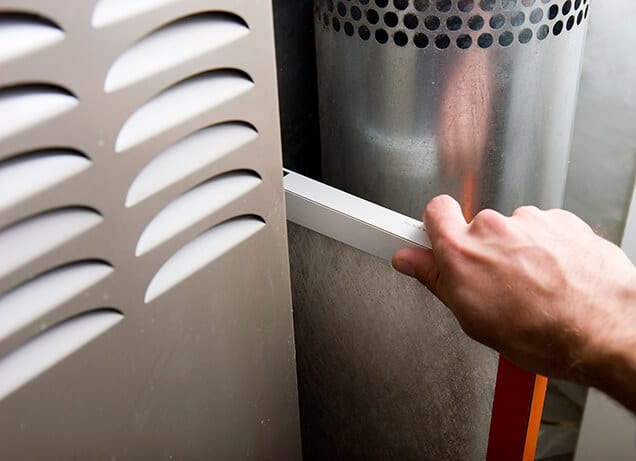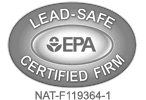A Look at the Best Furnace Filters

A furnace filter protects your HVAC system while still improving the air quality inside your home. These air filters are made of various fibers such as polyester, fiberglass, or cotton, and they function by catching particles such as dirt, dust, and dander that otherwise would clog your furnace or sit in your ductwork.
If you’re looking to purchase a new furnace filter, continue reading to find out everything you need to know about selecting the best furnace filter for your needs.
Types of Furnace Filters
Typically installed in a frame, a furnace filter is a rectangular strip of fibrous filtration material. Usually, it’s placed in a passage behind the inlet cover on the furnace and fitted in the return vents.
Furnace filters may be among the least fascinating goods in the world of home renovation. However, they have a major impact, and finding the correct furnace filter saves money while also improving air quality. Originally, filters were intended to safeguard the furnace’s working parts. Thanks to technological breakthroughs, filters now prevent dangerous materials from recirculating back into the air you breathe at home.
The minimal efficiency reporting value, or “MERV,” is used to grade furnace filters. The higher the rating, the better at capturing airborne particles the filter is. The number range is one to 20, indicating the lowest and maximum efficiency.
1. Disposable Fiberglass Filters
When you think of “furnace filter,” the first thing that comes to mind is a disposable fiberglass filter. It’s made of 1-inch thick spun fiberglass and has no use other than to keep larger particles like lint, dust, and debris out of your system.
These filters cost between a dollar and two and have a 2-3 MERV rating. They have little, if any, effect in cleaning the air, despite being relatively cheap and suitable for tenants without respiratory issues or allergies.
2. Disposable Pleated Filters
Disposable pleated air filters, which are comprised of cotton or polyester paper, must be replaced regularly to prevent clogging and overworking your HVAC system. These can remove some minute pollutants like spores and bugs for better air quality.
These alternatives cost around four to five dollars and have a MERV rating of 6. They’re not only cheap but they’re also composed of environmentally friendly materials and can block certain small particles. However, they can increase airflow resistance, rendering your system more costly to maintain.
3. High-Efficiency Pleated Filters
High-efficiency pleated alternatives are the oldest form of furnace filters, made of deep 4- to 5-inch thick pleats of synthetic cotton joined to a stiff metal grid to avoid leaks or fluttering. These filters are a little on the pricey side at $100, but they have a high MERV rating of 14-16, making them appropriate for use in hospitals.
Their thickness makes them common for special housing. Buying one for your home may be difficult as a result. However, they can filter out even the tiniest particles, making them useful for people with respiratory difficulties or autoimmune conditions.
4. Disposable Electrostatic Filters
Electrostatic paper or cotton fibers attract and trap tiny particles in a disposable electrostatic filter. These alternatives are affordable, come in standard sizes, and have a MERV rating of 10, making them a good choice for homes with pets, children, or smokers. Custom sizes are costly if needed, resulting in larger expenses if replaced frequently.
5. Reusable Electrostatic Filters
A reusable electrostatic filter has self-charging cotton strands that attract particles like its disposable counterpart. Permanent alternatives come with a machine-washable, detachable furnace filter that is reusable for up to eight years.
These generate little waste, they’re more efficient than pleated air filters, and they’re a suitable option if you use a regular size with a MERV rating of 8. However, they’re less effective than electrostatic ones, and custom sizes are costly.
6. Polyester Filters
This reusable filter is thicker than fiberglass, preventing more airborne pollutants. It’s available in flat or pleated versions, with thicknesses ranging from one to four inches. It has a MERV rating of 8 and traps up to 91% of typical airborne particles, such as pollen and dust.
On the downside, because some particles can still get through, these alternatives do not eliminate the requirement to clean your HVAC filters every few years.
7. HEPA Filters
A HEPA filter (high-efficiency particulate air filter) can filter out 99.7% of airborne particles, but it’s not widely accessible in sizes that fit conventional furnaces.
Because HEPA filters are very dense, they can limit airflow into the furnace; thus, they’re usually only used in hospitals or commercial furnaces, similar to high-efficiency pleated air filters. They have a MERV rating of 16-20, preventing the most airborne particles and providing superior air quality, but they’re not ideal for most household furnaces.
What to Consider When Buying a Furnace Filter
Picking the appropriate furnace filter necessitates matching the filter’s requirements to the furnace maker’s; just because a filter blocks out more particles than another does not imply that it’s the best option for your furnace.
Filter Sizes
Furnace filters are available in various sizes, with the most popular being 20×25 inches, 16×20 inches, and 16×25 inches. The thickness of a filter can range from one to five inches, and the thicker it is, the more particles it can stop. Remember to read the operating or owner’s manual before selecting a filter since not all furnaces take a thicker product.
Disposable vs. Washable
Changing your furnace’s filter regularly, at least every three months, will help protect the furnace’s functional elements from damage caused by dust and other particles. Functional elements that will benefit are the heating coils and fan, for example. Disposable filters are affordable, and you can trash them after use.
Electrostatic fibers act in washable filters with a heavier aluminum frame. Depending on your brand of choice, a washable filter can last several years. However, it necessitates a specific washing technique, including layering the filter and washing each layer individually.
To avoid mold and mildew formation, ensure a washable filter is dry before reinstalling it. For many people, disposable filters are the simplest and most convenient option.
MERV Rating
Based on their density, furnace filters have a minimum efficiency reporting value (MERV). The MERV scale ranges from 1-20, with filters in the 6-12 range suitable for household use. Your furnace’s operating guide should recommend the best MERV grade for your furnace. Higher-efficiency filters are common in commercial and healthcare environments where the HVAC system is strong enough to easily pull air through a dense filter.
Climate
The ideal furnace filter for your home also depends on where you reside. Mold growth is a major worry in humid, rainy places, so if you live in one, use a furnace filter with a MERV rating of at least 6 to prevent mold spores from being pulled into the furnace and then recirculating throughout your home.
Furnace filters come in different types, and there are several factors to consider when going for the best, like your residential area’s climate. If you’re in Seattle and you’re looking for heating, and air conditioning services, Brennan Heating & Air Conditioning should be your go-to HVAC company. Call us now, and let’s improve your home comfort. We also offer water heaters and electrical services.







